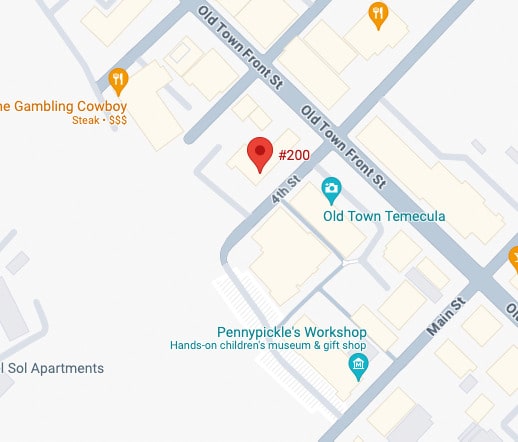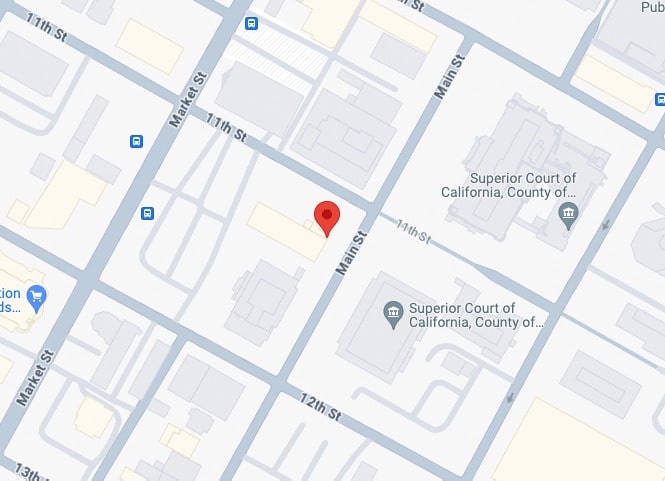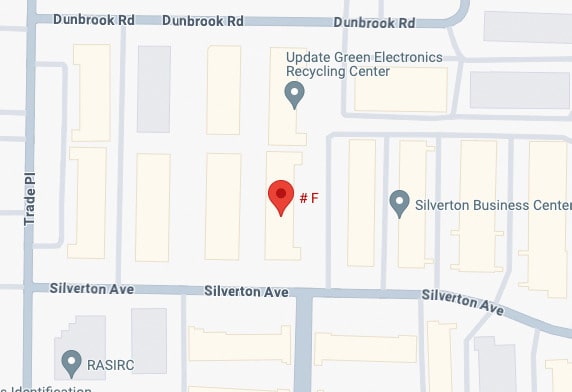California has a complex legal framework that classifies the numerous criminal offenses its residents may commit. Understanding how crimes are categorized is pivotal to comprehending the state's legal landscape.
This article will comprehensively discuss how crimes are classified in California. We will highlight the distinctions between felonies and misdemeanors, the nuances of the California Penal Code, and the unique aspects of laws like the three-strike rule and wobbler offenses.
Felonies Offenses
Felonies are serious criminal offenses that typically carry severe penalties, including imprisonment for more than one year, substantial fines, or even capital punishment. These crimes are considered more severe than misdemeanors, which are less serious offenses.
Some key characteristics of felonies include the following:
- The seriousness of the offense — Felonies are generally crimes of a more serious nature. They often involve significant harm to individuals or property, such as violent crimes, serious drug offenses, or white-collar crimes with substantial financial implications.
- Penalties — Conviction of a felony can result in substantial punishments, including long-term imprisonment in a state or federal prison. In some cases, the death penalty may be a potential consequence, depending on the nature of the crime.
- Permanent consequences — Felony convictions can have long-lasting effects beyond the immediate sentence, impacting an individual's ability to find employment, housing, or to regain certain civil rights.
- Categorization in the legal system — Felonies are often classified based on severity, with different degrees or classes of felonies. For example, first-degree murder may be considered more severe than second-degree murder, and the penalties for each may differ.
Common examples of felonies include murder, rape, robbery, burglary, kidnapping, certain drug offenses, white-collar crimes like embezzlement or fraud, and aggravated assault. The specific penalties for felonies can vary depending on factors like the severity of the crime, any prior criminal history of the offender, and whether the offense involved aggravating circumstances.
Misdemeanors Offenses
Misdemeanors are less serious criminal offenses compared to felonies. While they still carry legal consequences, these penalties are generally less severe than those associated with felonies.
Misdemeanors are considered lower-level offenses, but they are nonetheless violations of the law. Here are key characteristics of misdemeanors:
- The severity of the offense — Misdemeanors are typically less serious crimes than felonies. They may involve actions that cause harm or inconvenience but are generally considered less dangerous or damaging than felony offenses.
- Penalties — The penalties for misdemeanors are usually less severe than those for felonies. While imprisonment is a possibility, the sentences are typically shorter, often involving incarceration in a local jail rather than a state or federal prison. Fines and community service are also common penalties for misdemeanor convictions.
- Permanent consequences — Although less severe than felonies, misdemeanor convictions can still have repercussions such as limitations on employment opportunities, difficulties obtaining certain licenses, and challenges securing housing.
- Categorization in the legal system — Misdemeanors are often classified into different categories or classes based on their severity. These classifications can influence the potential penalties an individual may face upon conviction.
Some common misdemeanor offenses include simple assault, petty theft, disorderly conduct, vandalism, certain drug offenses (involving smaller quantities), and some traffic violations. Like felonies, the consequences for misdemeanors can vary based on factors like the nature of the offense, any prior criminal history of the offender, and whether aggravating circumstances are present.
Wobbler Offenses/ Wobblers
"Wobblers" refer to criminal offenses that can be charged and prosecuted as either felonies or misdemeanors, depending on the discretion of law enforcement, prosecutors, and the circumstances surrounding the case. The term "wobbler" reflects the flexibility in classification, as these offenses "wobble" between the more serious felony category and the less severe misdemeanor category.
Some key characteristics of wobbler offenses include the following:
- Discretionary charging — Prosecutors have the discretion to decide whether to charge a particular offense as a felony or a misdemeanor. This decision is often based on factors like the severity of the crime, the defendant's criminal history, and the case's specific details.
- Nature of the offense — Wobbler offenses generally fall in the middle ground between felonies and misdemeanors in terms of severity. Examples may include certain drug offenses, assault with a deadly weapon, and certain types of theft or property crimes.
- Potential impact on sentencing — The classification of a wobbler offense can significantly impact the potential sentencing outcomes. If charged and convicted as a felony, the penalties may include a longer prison sentence and other serious consequences. The punishments are typically less severe if charged and convicted as a misdemeanor.
- Factors influencing charging decision — Prosecutors may consider various factors when deciding whether to charge a wobbler offense as a felony or a misdemeanor. These factors can include the specific details of the crime, the defendant's criminal history, and any mitigating or aggravating circumstances.
The California Three Strikes Rule
The California Three Strikes Law, implemented in 1994, is a stern response to repeat offenders engaged in serious or violent felonies. With its roots in a broader national movement, the law aims to deter individuals with a history of significant criminal activity, fostering public safety.
This legislation operates on a simple "three strikes" principle. A person convicted of a serious or violent felony faces their first "strike." A subsequent conviction for another serious or violent felony results in a second "strike." However, it is the third strike, a conviction for a serious or violent felony, that triggers the most severe consequences.
The impact on sentencing is pronounced. The first "strike" generally incurs the standard sentence for the committed offense. A second "strike" doubles this sentence. When a third serious or violent felony is committed, the individual may face a mandatory minimum sentence of 25 years to life in prison.
Crucial to the functioning of this law is the delineation of serious and violent felonies. Offenses falling under this category, such as murder, robbery, sexual assault, and specific drug offenses, trigger the "strikes" that intensify sentencing.
Yet, the California Three Strikes Law has not been without criticism. Accusations of disproportionately harsh sentences and contributing to prison overcrowding have been raised. Critics argue that it limits judicial discretion and may not effectively address the root causes of criminal behavior.
There have been efforts to reform the law in response to these concerns. In 2012, California voters approved Proposition 36, which modified the Three Strikes Law to impose a life sentence only when the third strike is a serious or violent felony.
With its unique approach to repeat offenses, this legal framework has significantly impacted sentencing in California. It remains a focal point in ongoing discussions about criminal justice reform and the balance between deterrence and fairness.
Special Categories of Criminal Offenses in California
The California Penal Code has classified criminal offenses into distinct categories, such as the following:
- White collar crimes.
- Sex offenses.
- Drug offenses.
- Violent crimes.
- Domestic violence offenses.
Here is a brief discussion of each of these categories:
White Collar Crimes
White-collar crimes in California refer to non-violent, financially motivated offenses typically committed by individuals, businesses, or government professionals. These crimes are characterized by deceit, concealment, or violation of trust and are often committed for financial gain.
Here are examples of white-collar crimes in California:
- Fraud — This may include insurance fraud, securities fraud, and mortgage fraud.
- Embezzlement — Misappropriating funds entrusted to an individual, often an employee, for personal use.
- Identity theft — Unlawfully obtaining and using someone's personal information for financial gain.
- Forgery — Falsifying documents or signatures with the intent to defraud.
- Insider trading — Illegally trading stocks based on non-public, material information about a company.
- Bribery and corruption — Offering, giving, receiving, or soliciting something of value to influence the actions of a public official or private individual.
- Money laundering — Concealing the origins of illegally obtained money, typically by passing it through a complex sequence of banking transfers or commercial transactions.
- Computer and internet crimes — Committing crimes such as hacking, cyber fraud, or spreading malware for financial gain.
- Tax evasion — Illegally evading payment of taxes owed to the government.
- Antitrust violations — Engaging in anti-competitive practices to manipulate markets or eliminate competition.
- Racketeering (RICO) violations — Participating in organized criminal activities, often through a pattern of racketeering offenses.
- Environmental crimes — Engaging in activities that harm the environment for financial gain, such as illegal dumping of hazardous waste.
White-collar crimes in California are often complex and may involve investigations by various agencies, including state and federal law enforcement. Penalties for these crimes can include fines, restitution, probation, and imprisonment. Prosecution may be pursued under state law, federal law, or both, depending on the nature and scope of the offenses.
Sex Offenses
Sex offenses in California encompass a range of criminal activities related to sexual misconduct, abuse, or exploitation. The legal system in California takes these offenses seriously, and they are addressed under specific sections of the California Penal Code.
Here are examples of sex offenses in California:
- Rape — Engaging in non-consensual sexual intercourse with another person.
- Sexual battery — Unlawfully touching another person's intimate parts for sexual arousal, abuse, or gratification.
- Statutory rape — Engaging in sexual intercourse with a minor who is below the age of consent, even if the child agrees to the act.
- Lewd acts with a minor — Engaging in sexual acts with a child for sexual arousal or gratification.
- Indecent exposure — Willfully exposing one's genitals in a public place for sexual arousal or gratification.
- Forcible sodomy — Engaging in non-consensual anal intercourse using force or threat of force.
- Sexual exploitation of a child — Producing, distributing, or possessing child pornography.
- Human trafficking for commercial sex acts — Recruiting, enticing, or forcing individuals into prostitution or other commercial sex acts.
- Sexual harassment — Unwanted sexual advances, comments, or conduct that creates a hostile environment.
- Failure to register as a sex offender — Violating the requirement for individuals convicted of certain sex offenses to register as sex offenders.
Sex offenses are prosecuted vigorously, and convictions can result in severe penalties, including imprisonment, fines, and registration as a sex offender. The legal consequences may vary based on the specific offense, the age of the victim, and other factors.
Drug Offenses
California has stringent laws regarding drug offenses, addressing various aspects of drug possession, distribution, manufacturing, and trafficking. The severity of penalties depends on factors like the type and quantity of drugs involved and the individual's criminal history.
Here are examples of drug offenses in California:
- Possession of a controlled substance — Unlawful possession of certain controlled substances, such as cocaine, heroin, or methamphetamine.
- Possession of drug paraphernalia — Possessing items used for the consumption, storage, or manufacturing of drugs, such as pipes or syringes.
- Possession for sale — Possessing a controlled substance with the intent to sell or distribute it.
- Sale or distribution of controlled substances — Selling, transporting, or distributing controlled substances.
- Drug trafficking — Engaging in the transportation of large quantities of drugs with the intent to distribute.
- Manufacturing of controlled substances — Illegally producing controlled substances, such as methamphetamine or LSD.
- Possession of marijuana for sale — Possessing marijuana with the intent to sell or distribute.
- Cultivation of marijuana — Growing marijuana plants for personal use or with the intent to sell.
- Possession of prescription drugs without a prescription — Possessing prescription drugs without a valid prescription.
- Under the influence of a controlled substance — Being under the influence of drugs in a public place.
- Prescription fraud — Forging or obtaining prescription drugs through fraudulent means.
The penalties for drug offenses can range from fines and probation to imprisonment, depending on the severity of the crime and the individual's criminal history. California has also implemented various diversion programs and treatment options for non-violent drug offenders to address the underlying addiction issues. It is essential to seek legal advice if facing drug-related charges to understand the potential consequences and explore available defenses.
Violent Crimes
California defines and prosecutes a range of violent crimes under its legal system. These offenses involve the use of force or the threat of force against individuals or property.
The severity of penalties varies based on the specific crime committed. Here are examples of violent crimes in California:
- Assault — Intentionally causing another person to fear imminent bodily harm.
- Battery — Unlawfully using force or violence against another person.
- Assault with a deadly weapon — Committing an assault using a weapon likely to cause significant bodily injury.
- Robbery — Taking another person's property through force, fear, or threat of violence.
- Carjacking — Taking possession of a motor vehicle from another person by force or threat of force.
- Kidnapping — Unlawfully taking, holding, or transporting another person against their will.
- Criminal threats — Threatening to commit a crime that would result in death or significant bodily injury to another person.
- Manslaughter — Unintentionally causing the death of another person, either through negligence or in the heat of passion.
- Murder — Unlawfully killing another person with malice aforethought.
- Voluntary manslaughter — Intentionally causing the death of another person without premeditation, often in the heat of passion.
- Homicide by vehicle — Causing the death of another person while driving recklessly or under the influence of alcohol or drugs.
These are just a few examples, and the legal definitions and penalties for violent crimes in California are outlined in the state's penal code. Penalties for violent crimes can range from fines and probation to lengthy prison sentences, depending on the severity of the offense and the circumstances surrounding it.
Domestic Violence Offenses
Domestic violence offenses in California involve acts of violence, abuse, or threats of harm between individuals with close relationships. California law recognizes the seriousness of domestic violence and has specific statutes to address these offenses.
Here are examples of domestic violence offenses in California:
- Domestic battery — Using force or violence against a current or former spouse, cohabitant, or dating partner.
- Corporal injury on a spouse or cohabitant — Inflicting bodily injury resulting in a traumatic condition on a current or former spouse, cohabitant, or dating partner.
- Child abuse — Inflicting physical punishment or injury on a child in a cruel way.
- Elder abuse — Committing abuse, neglect, or financial exploitation against an elderly or dependent adult.
- Stalking — Engaging in a pattern of conduct that causes a reasonable person to fear for their safety or the safety of their immediate family.
- Violation of a restraining order — Disobeying the terms of a court-issued restraining or protective order related to domestic violence.
- Criminal trespass — Unlawfully entering the residence or property of a current or former spouse, cohabitant, or dating partner with the intent to commit a crime.
- Revenge porn — Distributing intimate images of a current or former spouse, cohabitant, or dating partner without their consent.
- False imprisonment — Unlawfully depriving another person of their liberty, often by using force or the threat of force.
Domestic violence offenses can result in criminal and civil consequences, including protective orders, counseling requirements, and potential incarceration. California takes these offenses seriously, and penalties can vary based on the case's circumstances.
Find a Bail Bonds Agent Near Me
If you or your loved one is arrested, you will want to start preparing a defense strategy to fight the charges leveled against you. Thus, you don't want to spend more time in custody, and that’s where bail bonds come in. At Justice Bail Bonds, we understand the urgency and stress that can accompany an arrest. Our team is here to offer reliable Temecula bail bond services to help you or your loved one secure release from custody. Contact us at 714-541-1155 for immediate assistance.










